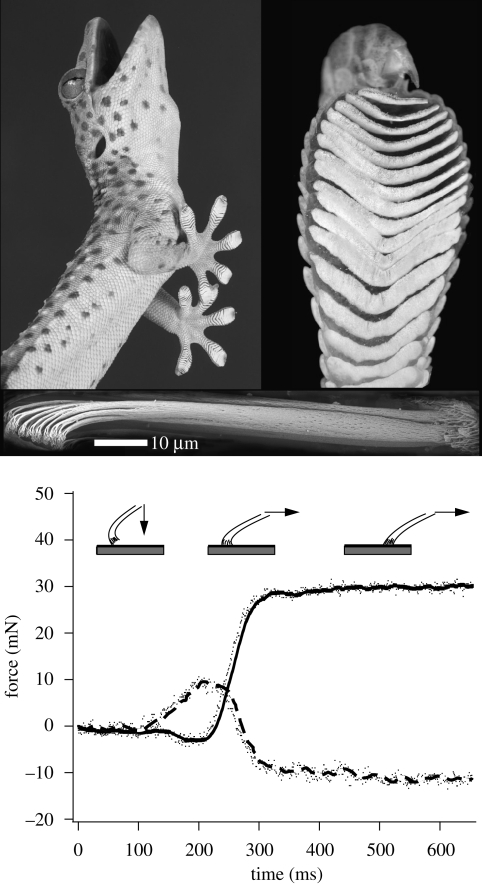Figure 1.
The tokay gecko (approx. 30 cm in length) possesses adhesive pads on the undersides of its toes (approx. 1 cm in length). Arrays of branched setae (approx. 110 µm in length) achieve intimate contact with surfaces to engage intermolecular van der Waals forces. Setae are adhesive only under the application of a shear force. Setae are first applied vertically to a surface and then sheared parallel to the surface. The setal shafts load elastically until the elastic component is saturated, at which point the setae slide across the substrate while remaining in adhesion. As the adhesive begins to slide (300 ms), friction and adhesion forces remain constant and do not exhibit any notable decrease, uncharacteristic of solid contact mechanics. The solid line represents friction and the dashed line adhesion. Note that for normal force, adhesion is negative while compression is positive.

